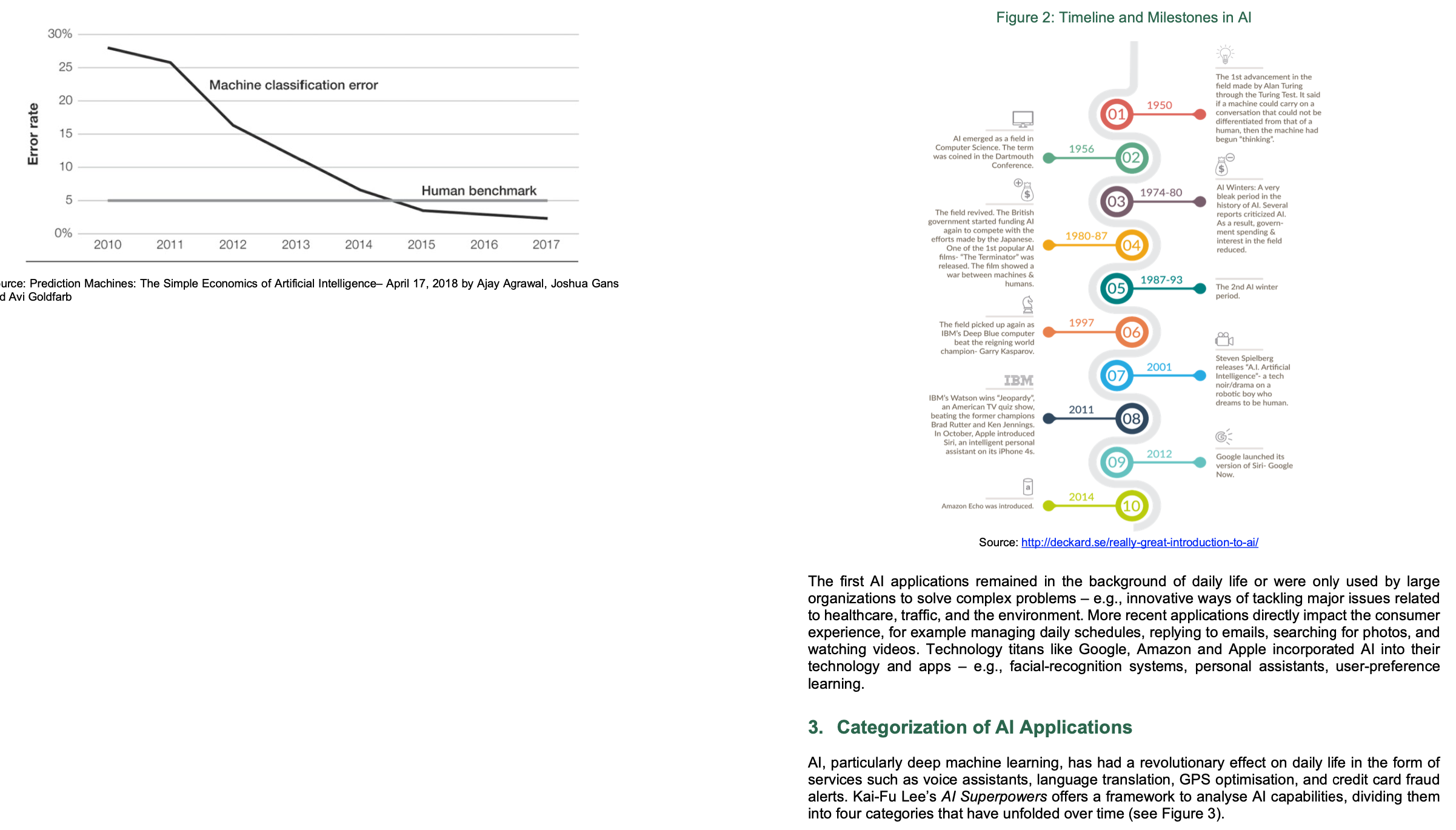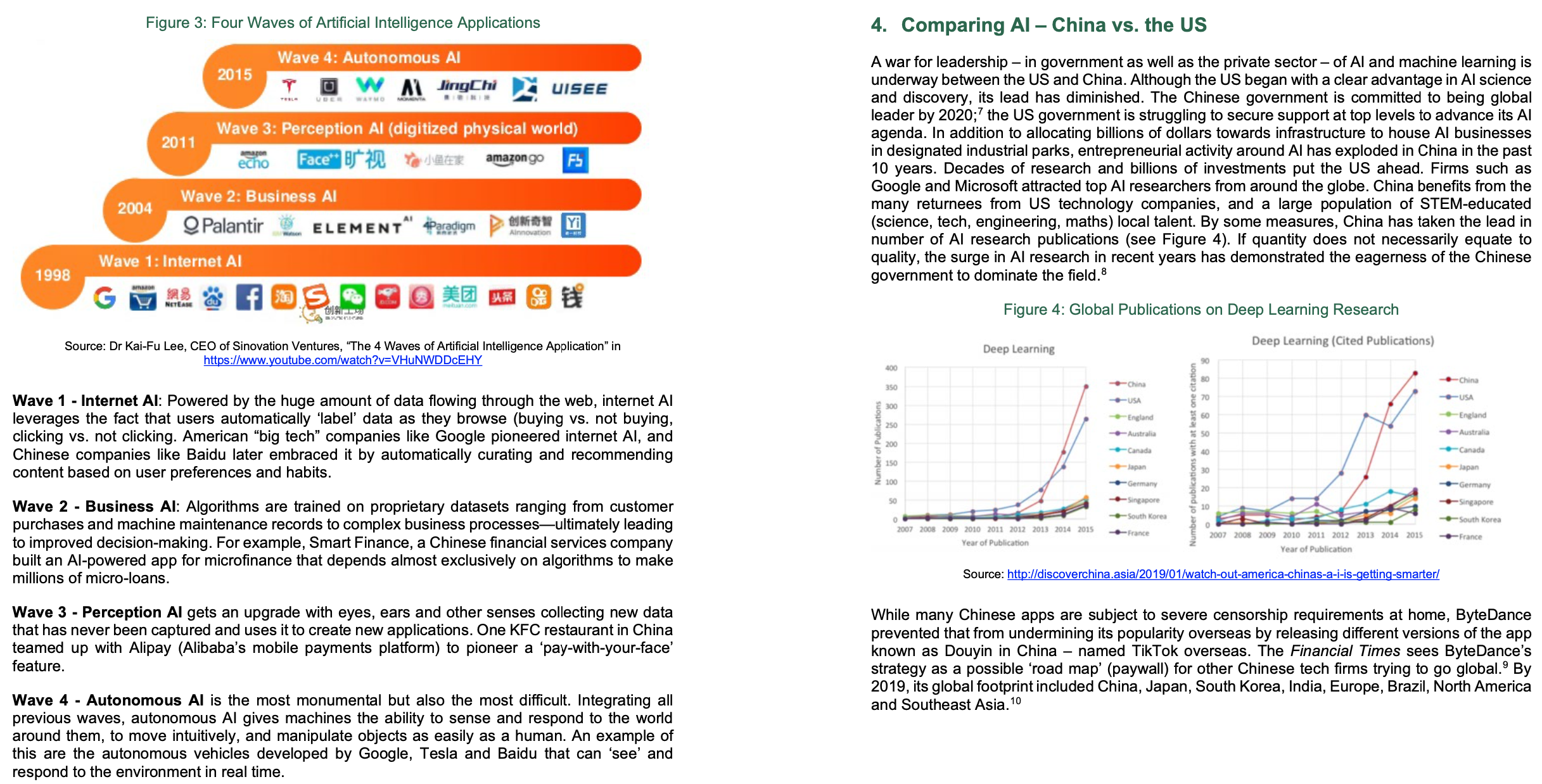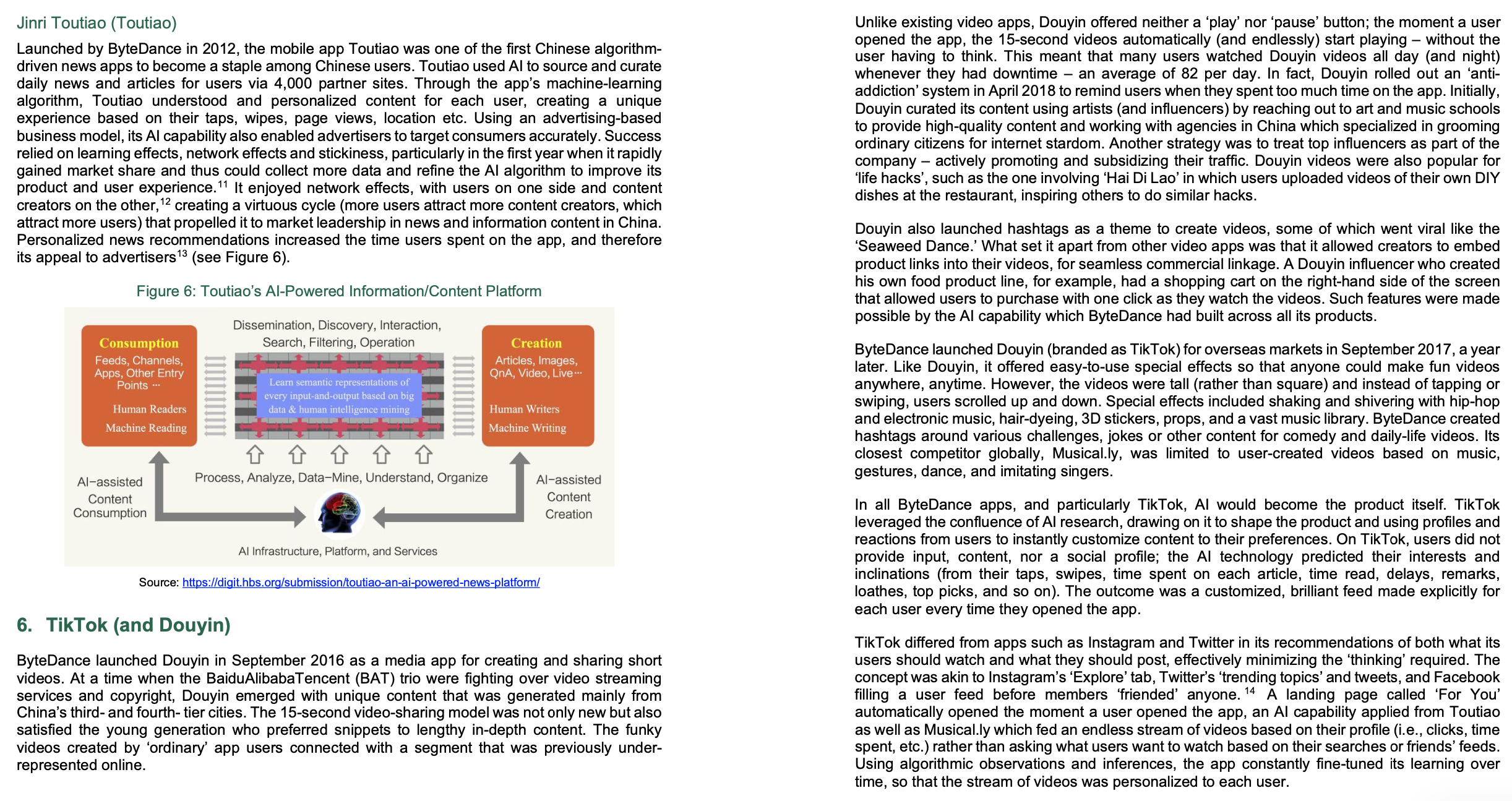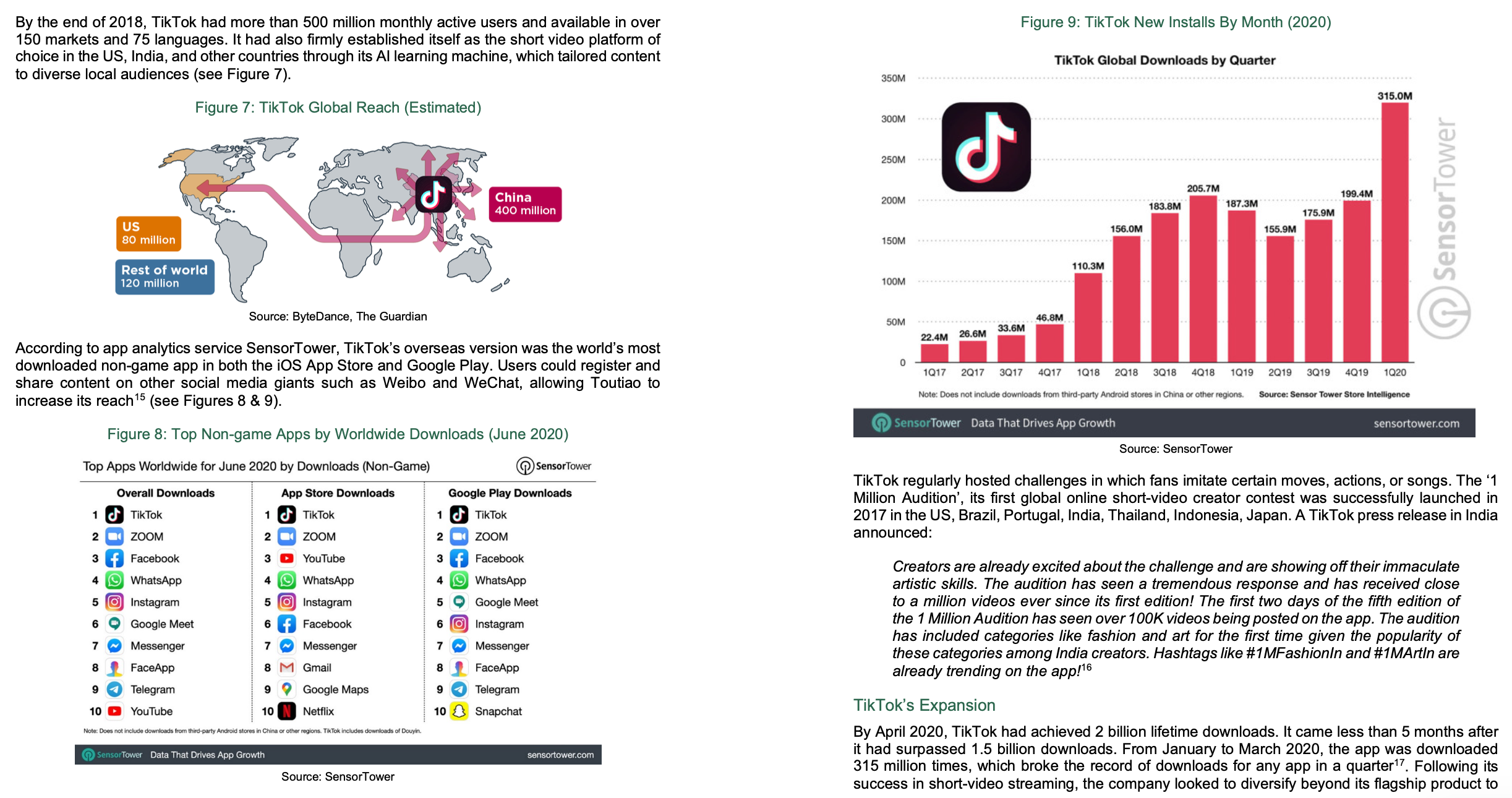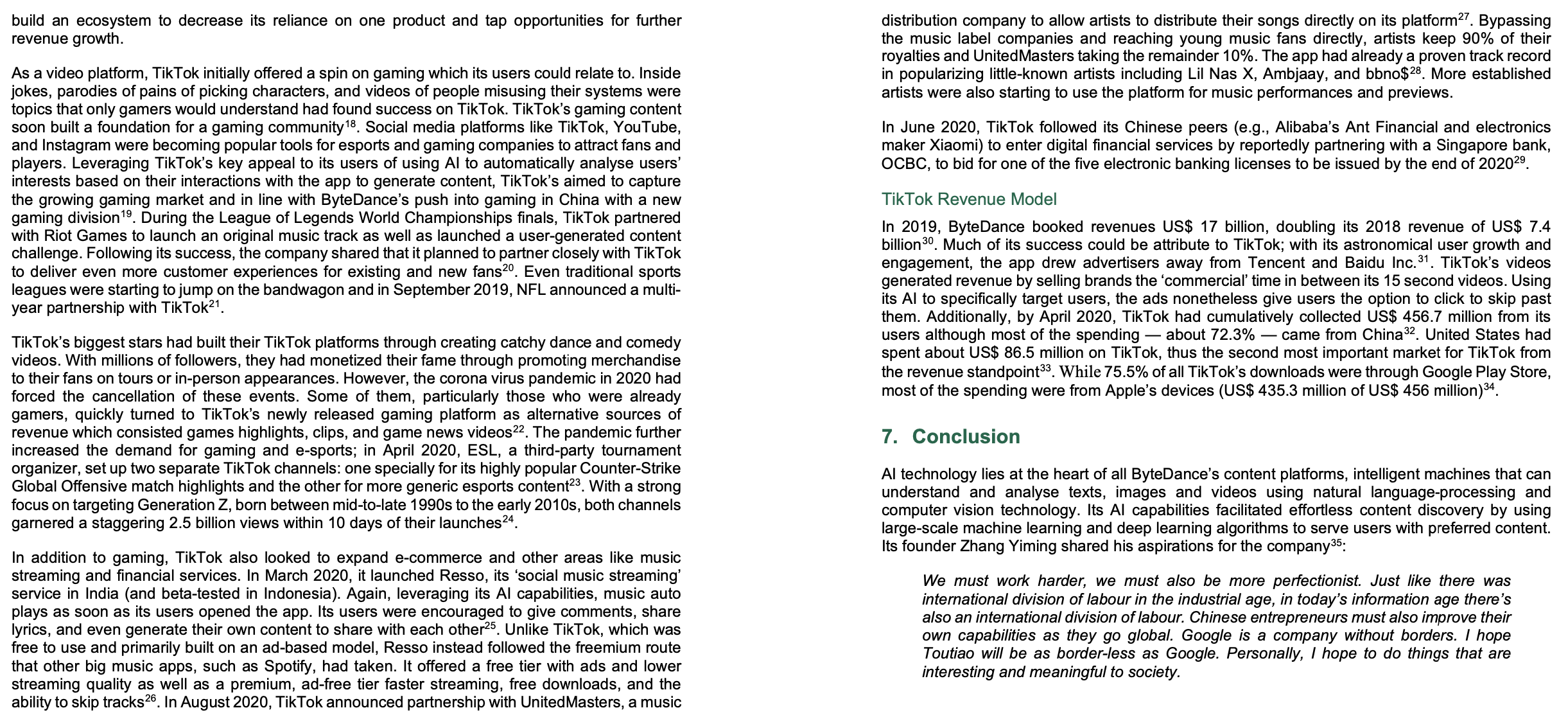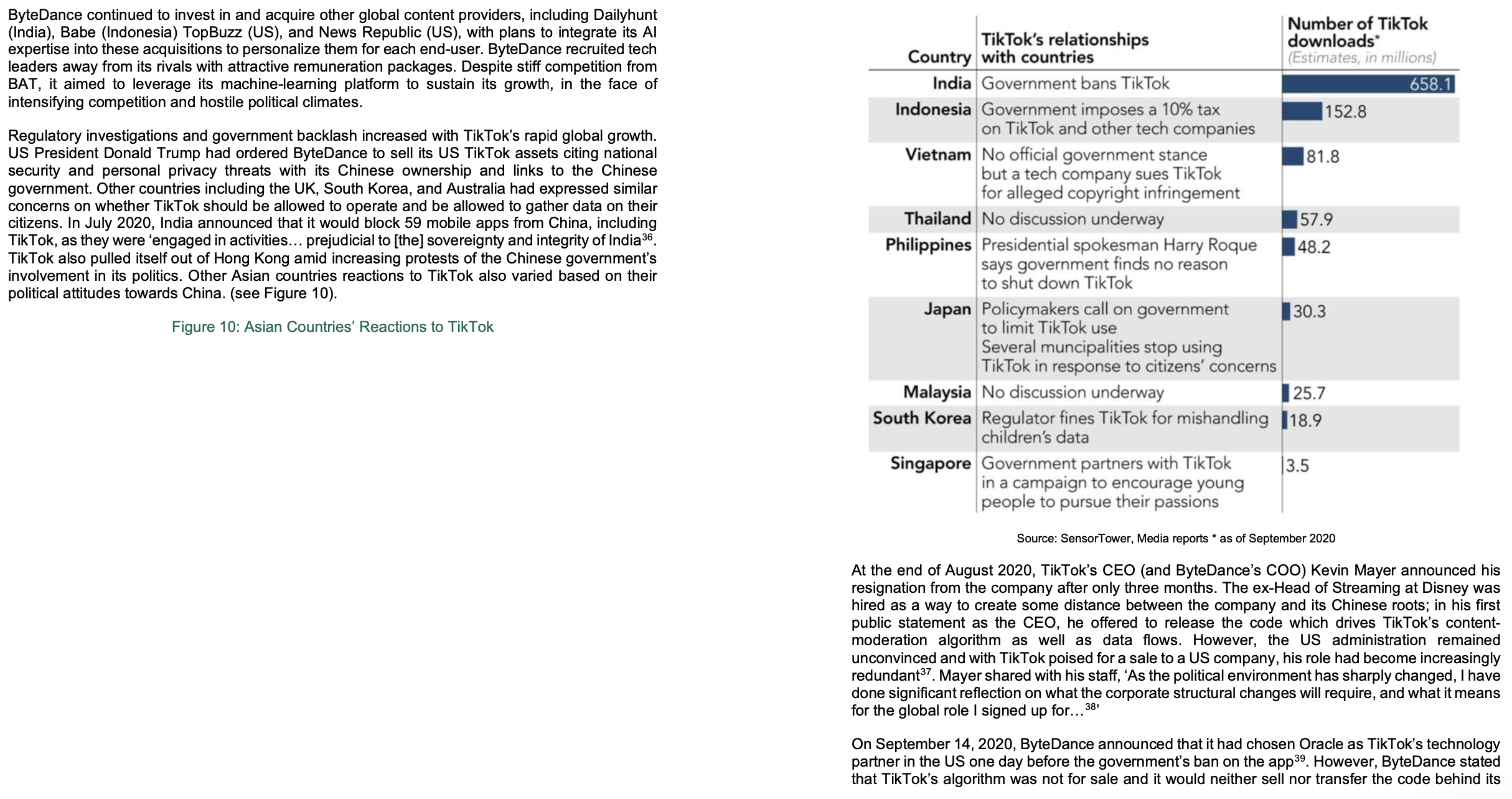No specific word count
1.What business problem are we trying to solve? Why is that problem important to the business?
2.How do I know this is a problem?
3.How did we get here? Critically assess the factors that have contributed to our current situation?
4.How urgent and important are the issues identified?
5.Who is affected most by this issue?
6.What are the constraints / considerations for action?
7.What data are provided in the case (ie. numbers) and how might they help you assess the situation?
Use your analysis of the current situation to identify the relevant criteria.
Criteria Meaning/Measurement Why selected
1.
2.
3.
Analysis of Alternatives
What options are given in the case?
Are there additional options you think need to be considered?
Options Performance Against Criteria
1. 2. 3.
1.
2.
3.
Decision
Which option do you think is best?Why?
How does this proposed solution address the business problem identified in your analysis of the current situation?
Implementation
How will you go about implementing your decision (who will do what, when, and how)?
Short Term (= ________ days/wks/mths/yrs):
Medium Term (= _____ days/wks/mths/yrs):
Long Term (= ________ days/wks/mths/yrs):
What are the major risks associated with your decision?
What steps will you take to avoid or mitigate those risks?
Source/Text/Reference/Material:
"Al technology touches more aspects of our lives than we are even aware of, from the 2. A History of Artificial Intelligence (Al) networked systems that control the flow of traffic through our cities and the algorithms that create our music playlists, to the systems in healthcare and education that run The term 'artificial intelligence' was coined in 1956 at a historic conference at Dartmouth College, automated diagnostics and recommend online courses to expand our knowledge by John Mccarthy, professor of Mathematics. It is "artificial" in that tasks that usually involve base. As Al becomes an increasingly integral part of our society, ByteDance believes human cognition are performed by computer systems, such as recognizing patterns, predicting that we - and our industry peers - have a duty to ensure that we understand and can outcomes clouded by uncertainty, making complex decisions. Al algorithms are able to perceive anticipate the social impact of these new technologies, and manage this impact and interpret the world around us-and, it is claimed, may eventually be capable of emotion, responsibly." compassion, and creativity." In basic terms, Al can be broadly defined as a field of computer Zhang Yiming, Founder and CEO, ByteDance (December 1, 2017) science whereby machines take on human intelligence or capabilities that exceed the cognitive performance of humans. 1. Introduction From 2011, with the advent of new algorithms, big data and artificial general intelligence, scientists such as Geoffrey Hinton leveraged access to so-called 'big data', faster computers, and ByteDance, the new media firm behind TikTok, a short-form video-sharing app, hit the headlines advanced machine-learning techniques to apply statistical Al approaches to various problems. in 2018 when its valuation jumped to US$ 75 billion, surpassing Uber's US$ 72 billion to become Analysing large quantities of information from a variety of sources using data mining, statistics, the world's most valuable start-up. Along the way it acquired several international services and modelling, they could predict future outcomes. An entire Al subfield focused on prediction, Including Musical.ly and News Republic, with an ambitious plan to expand beyond China. seeking to fill in missing information by using data that did exist to generate new information based However, its rise to fame was not without missteps. It fell afoul of China's internet censors in April, on underlying patterns. As the effectiveness and cost of making predictions fell thanks to better resulting in its new aggregation unit shutting down for 24 hours and founder Zhang Yiming having algorithms and processing power, their use expanded across a wide range of human activities to issue a 'self-reflective' public apology. He also pledged to expand its vetting team from 6,000 and business applications such as fraud detection, and machine-learning applications such as for to 10,000 and to ban creators whose content was "against community values". credit-worthiness (likelihood of loan repayment), health insurance (spending on medical treatments) and inventory management (daily warehouse stock levels). New classes of prediction Launched by ByteDance in September 2016, TikTok - known as Douyin in China - is a social problems emerged thanks to advances in machine intelligence technology, including object media app for creating and sharing videos as well as live broadcasting. Within two years it had identification, language translation and drug discovery. become a leading short video platform in Asia. Its acquisition of Musical.ly in August 2018 cemented its growing dominance in the US and around the world. In a span of less than three However, even the best Al algorithm could not succeed unless it had practical application to the years, its 40,000 global headcount have also grown to surpass Facebook's 35,600 staff, showing real world. Efforts focused on improving input data so that predictions could be calibrated. In 2006, the world yet again, the speed and advantages of scaling in China. However, TikTok hit a Fei Fei Li, a computer science professor at the University of Illinois Urbana-Champaign, built a roadblock in March 2019 when it was fined a record US$ 5.7 million by the US Federal Trade dataset called 'ImageNet' which subsequently evolved into an annual competition to develop Commission for collecting the personal data of children under 13. Its troubles escalated with the algorithms to identify objects in it with the lowest error rate. From the first year of the competition US government banning the app and forcing its sale. This led to TikTok suing the Trump in 2010, predictions improved from an error rate of 28% to better-than-human benchmarks by administration in August 2020 even as it negotiated with potential US buyers. 2015 (see Figure 1). In less than 70 years, many milestones were achieved (see Figure 2). Barriers to its global expansion include fierce local competition, government regulations and US- China trade tensions. Yet it established itself as a strong competitor to China's tech giants and Figure 1: Image Classification Error over Time was building to take on US tech giants. ByteDance reportedly made profits of US$ 3 billion on US$ 17 billion in revenue in 2019 with its private valuation around US$ 110 billion by June 2020. ByteDance was laying the groundwork for an even more ambitious project - a productivity app, Lark, to take on Slack, Microsoft and Google while TikTok also planned to further expand globally with music streaming and digital financial services. This case study presents a brief history of Al (Section 2), categorization of Al applications (Section 3), and a comparison of Al in China and the US (Section 4), before the ByteDance and TikTok stories resume from Section 5.Figure 2: Timeline and Milestones in Al 30% 25 Machine classification error The 1st advancement in the field made by Alan Turing 20 through the Turing Test. It said 1950 if a machine could carry on a 01 conversation that could not be differentiated from that of a Error rate 15 human, then the machine had Al emerged as a field in begun "thinking". Computer Science. The term 1956 was coined in the Dartmouth 02 10 Conference. 5 Human benchmark 1974-80 Al Winters: A very 03 bleak period in the history of Al. Several The field revived. The British reports criticized Al. government started funding Al As a result, govern 0% again to compete with the ment spending & 2010 2011 2012 2013 2014 2015 2016 2017 efforts made by the Japanese. 1980-87 interest in the field One of the 1st popular Al reduced. films- "The Terminator" was released. The film showed a war between machines & urce: Prediction Machines: The Simple Economics of Artificial Intelligence- April 17, 2018 by Ajay Agrawal, Joshua Gans humans. 1987-93 05 The 2nd Al winter Avi Goldfarb period. The field picked up again as 1997 IBM's Deep Blue computer 06 beat the reigning world champion- Garry Kasparov. Steven Spielberg 2001 releases "A.I. Artificial IBM 07 Intelligence"- a tech noir/drama on a BM's Watson wins "Jeopardy" obotic boy who an American TV quiz show, dreams to be human. beating the former champions 2011 Brad Rutter and Ken Jennings. 08 In October, Apple introduced Siri, an intelligent personal G assistant on its iphone 4s. 2012 09 Google launched its version of Siri- Google Now. a 2014 Amazon Echo was introduced. 10 Source: http://deckard.se/really-great-introduction-to-ai/ The first Al applications remained in the background of daily life or were only used by large organizations to solve complex problems - e.g., innovative ways of tackling major issues related to healthcare, traffic, and the environment. More recent applications directly impact the consumer experience, for example managing daily schedules, replying to emails, searching for photos, and watching videos. Technology titans like Google, Amazon and Apple incorporated Al into their technology and apps - e.g., facial-recognition systems, personal assistants, user-preference learning. 3. Categorization of Al Applications Al, particularly deep machine learning, has had a revolutionary effect on daily life in the form of services such as voice assistants, language translation, GPS optimisation, and credit card fraud alerts. Kai-Fu Lee's A/ Superpowers offers a framework to analyse Al capabilities, dividing them into four categories that have unfolded over time (see Figure 3).Figure 3: Four Waves of Artificial Intelligence Applications 4. Comparing Al - China vs. the US Wave 4: Autonomous Al 2015 A war for leadership - in government as well as the private sector - of Al and machine learning is TO W A\\ JingChi UISEE underway between the US and China. Although the US began with a clear advantage in Al science UBER and discovery, its lead has diminished. The Chinese government is committed to being global Wave 3: Perception Al (digitized physical world) leader by 2020; the US government is struggling to secure support at top levels to advance its Al 2011 agenda. In addition to allocating billions of dollars towards infrastructure to house Al businesses echo Face" BJ in JER amazon go F5 in designated industrial parks, entrepreneurial activity around Al has exploded in China in the past 10 years. Decades of research and billions of investments put the US ahead. Firms such as Wave 2: Business Al Google and Microsoft attracted top Al researchers from around the globe. China benefits from the 2004 many returnees from US technology companies, and a large population of STEM-educated Palantir ELEMENT" Paradigm Yi (science, tech, engineering, maths) local talent. By some measures, China has taken the lead in number of Al research publications (see Figure 4). If quantity does not necessarily equate to Wave 1: Internet Al quality, the surge in Al research in recent years has demonstrated the eagerness of the Chinese 1998 government to dominate the field. Figure 4: Global Publications on Deep Learning Research Source: Dr Kai-Fu Lee, CEO of Sinovation Ventures, "The 4 Waves of Artificial Intelligence Application" in Deep Learning Deep Learning (Cited Publications) https://www.youtube.com/watch?v=VHuNWDDCEHY 400 China ne citation China Wave 1 - Internet Al: Powered by the huge amount of data flowing through the web, internet Al USA OL -USA leverages the fact that users automatically 'label' data as they browse (buying vs. not buying, England #60 England clicking vs. not clicking. American "big tech" companies like Google pioneered internet Al, and -Australia * 50 Australia Number of Publication Chinese companies like Baidu later embraced it by automatically curating and recommending -Canada 40 Canada content based on user preferences and habits. 30 .Japan 20 Germany -Singapo er of publicatic Wave 2 - Business Al: Algorithms are trained on proprietary datasets ranging from customer 10 -Singapore purchases and machine maintenance records to complex business processes-ultimately leading South Korea South Korea 2007 2008 2009 2010 2011 2012 2013 2014 2015 to improved decision-making. For example, Smart Finance, a Chinese financial services company 2007 2008 2009 2010 2011 2012 2013 2014 2015 France Year of Publication built an Al-powered app for microfinance that depends almost exclusively on algorithms to make millions of micro-loans. Source: http://discoverchina.asia/2019/01/watch-out-america-chinas-a-i-is-getting-smarter/ Wave 3 - Perception Al gets an upgrade with eyes, ears and other senses collecting new data While many Chinese apps are subject to severe censorship requirements at home, ByteDance that has never been captured and uses it to create new applications. One KFC restaurant in China prevented that from undermining its popularity overseas by releasing different versions of the app teamed up with Alipay (Alibaba's mobile payments platform) to pioneer a 'pay-with-your-face' known as Douyin in China - named TikTok overseas. The Financial Times sees ByteDance's feature. strategy as a possible 'road map' (paywall) for other Chinese tech firms trying to go global. By 2019, its global footprint included China, Japan, South Korea, India, Europe, Brazil, North America Wave 4 - Autonomous Al is the most monumental but also the most difficult. Integrating all and Southeast Asia. 10 previous waves, autonomous Al gives machines the ability to sense and respond to the world around them, to move intuitively, and manipulate objects as easily as a human. An example of this are the autonomous vehicles developed by Google, Tesla and Baidu that can 'see' and respond to the environment in real time.5. The ByteDance Story: Founding an Al Technology Company Figure 5: 100 Most Promising Al Start Up Globally Back in 2012, ByteDance was founded by 29-year-old Zhang Yiming, who predicted mobile devices was the key to the way information would be consumed in the future. Investors were 100 MOST PROMISING A.I. STARTUPS GLOBALLY sceptical that a news aggregator app could compete profitably against existing news apps. Defying (GROUPED BY SECTOR all expectations, ByteDance became a world-leader in apps that leveraged its Al capabilities. Its SIZE OF CIRCLE SHOWS TOTAL FUNDING FOR EACH COMPANY success was largely attributed to its artificial intelligence and machine learning algorithms that Bytedance ZestFinan delivered customized content feeds to users of all its products. Initially, ByteDance's differentiator CREDIT SCORES NEWS & MEDIA FINTECH & INSURANCE $268 $3.11 BILLION lay in its use of proprietary technology to cut out 'content search'. Unlike Amazon and its million total funding counterparts that used collaborative technology (user characteristics and similar user profiles), ROBOTICS ByteDance used content-based technology that took into account user behaviour (reading, UBTECH AND clicking, liking) to predict their preferences. HUMANOID ROBOTIC OR AL $521 PERSONAL LOANS million Affirm Following success with texts in Toutiao (the news reading app), it applied its technology to all INSTANT FINANCING $585 OPTIONS Vicarious Cloud Minds ByteDance products including Douyin (and TikTok) which used Al and machine learning to deliver $525 million Brain preferred content, using algorithms in computer vision and natural language-processing ricon UCATION technology to understand and analyse written content, images and videos, and then delivered SALES LEAD Graphcu customized content. As users interacted with the content (by taps, swipes, time spent on each LEISURE ROBOTICS $264 M. article, comments) ByteDance's large-scale machine learning and deep learning algorithms learnt SCIENCE ENTERPRISE AI. more about their preferences to refine content delivery. This resulted in a high-quality content feed Hound MARKETING & SALES, Orbita Afinit .ASIA based on individual preferences and interests. The more content the system accumulated, the ulishu ASSISTANTS BIOTECH CANCER better the algorithms to enhance the content experience. RESEARCH $313 M. VOICE Among the many accolades received, ByteDance was named a top Al innovator by CBInsight on NORTH AMERICA RECOGNITION AUTOMOBILE $257 M its 2018 Al 100 List, and by Fast Company on its "most innovative companies" list. In January Recursion Zoox 2018, with $3.8 billion in funding, ByteDance topped the list of most promising global Al start-ups AUTONOMOUS VEHICLES (see Figure 5). CYBERSECURITY $290 M COMPUTER VISION $637 $281 M. million HEALTH CARE Networks Shape Nauto C3 loT DATA RISK B COMPLIANCE CYBER- LEGAL TECH SECURITY COMPUTER VISION $608 mition AND ISRAEL SECURITY CYBER SECURITY CROSS-INDUSTR OTHER CATEGORIES COMMERCE FORTUNE MAGAZINE SOURCE: CB INSIGHTS; FOR THE COMPLETE LIST, GO TO CBINS OM/RESEARCH-AI-100. Source: https://www.cbinsights.com/research/artificial-intelligence-top-startups/ As the underlying technology that powered ByteDance's systems was not limited by linguistic or cultural barriers, the company easily expanded beyond China. While a relative latecomer to China's tech scene, ByteDance embarked on a globalization strategy with a series of mergers and acquisitions. It thus accumulated a vast amount of content and social media created by people and rich engagement data across all their various products.Jinri Toutiao (Toutiao) Unlike existing video apps, Douyin offered neither a 'play' nor 'pause button; the moment a user Launched by ByteDance in 2012, the mobile app Toutiao was one of the first Chinese algorithm- opened the app, the 15-second videos automatically (and endlessly) start playing - without the driven news apps to become a staple among Chinese users. Toutiao used Al to source and curate user having to think. This meant that many users watched Douyin videos all day (and night) whenever they had downtime - an average of 82 per day. In fact, Douyin rolled out an 'anti- daily news and articles for users via 4,000 partner sites. Through the app's machine-learning addiction' system in April 2018 to remind users when they spent too much time on the app. Initially, algorithm, Toutiao understood and personalized content for each user, creating a unique experience based on their taps, wipes, page views, location etc. Using an advertising-based Douyin curated its content using artists (and influencers) by reaching out to art and music schools business model, its Al capability also enabled advertisers to target consumers accurately. Success to provide high-quality content and working with agencies in China which specialized in grooming relied on learning effects, network effects and stickiness, particularly in the first year when it rapidly ordinary citizens for internet stardom. Another strategy was to treat top influencers as part of the gained market share and thus could collect more data and refine the Al algorithm to improve its company - actively promoting and subsidizing their traffic. Douyin videos were also popular for product and user experience. " It enjoyed network effects, with users on one side and content 'life hacks', such as the one involving 'Hai Di Lao' in which users uploaded videos of their own DIY creators on the other, " creating a virtuous cycle (more users attract more content creators, which dishes at the restaurant, inspiring others to do similar hacks. attract more users) that propelled it to market leadership in news and information content in China. Douyin also launched hashtags as a theme to create videos, some of which went viral like the Personalized news recommendations increased the time users spent on the app, and therefore Seaweed Dance.' What set it apart from other video apps was that it allowed creators to embed its appeal to advertisers (see Figure 6). product links into their videos, for seamless commercial linkage. A Douyin influencer who created Figure 6: Toutiao's Al-Powered Information/Content Platform his own food product line, for example, had a shopping cart on the right-hand side of the screen that allowed users to purchase with one click as they watch the videos. Such features were made Dissemination, Discovery, Interaction, possible by the Al capability which ByteDance had built across all its products. Consumption Search, Filtering, Operation Creation ByteDance launched Douyin (branded as TikTok) for overseas markets in September 2017, a year Feeds, Channels, Articles, Images, Apps, Other Entry OnA, Video, Live ... later. Like Douyin, it offered easy-to-use special effects so that anyone could make fun videos Points .. Learn semantic representations of anywhere, anytime. However, the videos were tall (rather than square) and instead of tapping of every input-and-output based on big Human Readers data & human intelligence mining Human Writers swiping, users scrolled up and down. Special effects included shaking and shivering with hip-hop Machine Reading Machine Writing and electronic music, hair-dyeing, 3D stickers, props, and a vast music library. ByteDance created hashtags around various challenges, jokes or other content for comedy and daily-life videos. Its closest competitor globally, Musical.ly, was limited to user-created videos based on music, Al-assisted Process, Analyze, Data-Mine, Understand, Organize Al-assisted gestures, dance, and imitating singers. Content Content Consumption Creation In all ByteDance apps, and particularly TikTok, Al would become the product itself. TikTok leveraged the confluence of Al research, drawing on it to shape the product and using profiles and reactions from users to instantly customize content to their preferences. On TikTok, users did not Al Infrastructure, Platform, and Services provide input, content, nor a social profile; the Al technology predicted their interests and Source: https://digit.hbs.org/submission/toutiao-an-ai-powered-news-platform/ inclinations (from their taps, swipes, time spent on each article, time read, delays, remarks, loathes, top picks, and so on). The outcome was a customized, brilliant feed made explicitly for each user every time they opened the app. 6. TikTok (and Douyin) TikTok differed from apps such as Instagram and Twitter in its recommendations of both what its ByteDance launched Douyin in September 2016 as a media app for creating and sharing short users should watch and what they should post, effectively minimizing the 'thinking' required. The videos. At a time when the BaiduAlibabaTencent (BAT) trio were fighting over video streaming concept was akin to Instagram's 'Explore' tab, Twitter's 'trending topics' and tweets, and Facebook services and copyright, Douyin emerged with unique content that was generated mainly from filling a user feed before members 'friended' anyone. " A landing page called 'For You' China's third- and fourth- tier cities. The 15-second video-sharing model was not only new but also automatically opened the moment a user opened the app, an Al capability applied from Toutiao satisfied the young generation who preferred snippets to lengthy in-depth content. The funky as well as Musical.ly which fed an endless stream of videos based on their profile (i.e., clicks, time videos created by 'ordinary' app users connected with a segment that was previously under- spent, etc.) rather than asking what users want to watch based on their searches or friends' feeds. represented online. Using algorithmic observations and inferences, the app constantly fine-tuned its learning over time, so that the stream of videos was personalized to each user.By the end of 2018, TikTok had more than 500 million monthly active users and available in over Figure 9: TikTok New Installs By Month (2020) 150 markets and 75 languages. It had also firmly established itself as the short video platform of choice in the US, India, and other countries through its Al learning machine, which tailored content TikTok Global Downloads by Quarter to diverse local audiences (see Figure 7). 350M 315.0M Figure 7: TikTok Global Reach (Estimated) BOOM 250M 205.7M China 200M 199.4M 187.3M Sensor Tower 400 million 183.8M 175.9M US 156.0M 155.9M 80 million 150M Rest of world 110.3M 120 million 100M Source: ByteDance, The Guardian 50M 46.8M 33.6M 22.4M 26.6M According to app analytics service SensorTower, TikTok's overseas version was the world's most downloaded non-game app in both the iOS App Store and Google Play. Users could register and 0 1Q17 2Q17 3Q17 4Q17 1Q18 2Q18 3Q18 4Q18 1Q19 2Q19 4Q19 share content on other social media giants such as Weibo and WeChat, allowing Toutiao to increase its reach 15 (see Figures 8 & 9). Note: Does not include downloads from third-party Android stores in China or other regions. Source: Sensor Tower Store Intelligence SensorTower Data That Drives App Growth sensortower.com Figure 8: Top Non-game Apps by Worldwide Downloads (June 2020) Source: SensorTower Top Apps Worldwide for June 2020 by Downloads (Non-Game) SensorTower TikTok regularly hosted challenges in which fans imitate certain moves, actions, or songs. The '1 Overall Downloads App Store Downloads Google Play Downloads Million Audition', its first global online short-video creator contest was successfully launched in 1 TikTok 1 TikTok 1 TikTok 2017 in the US, Brazil, Portugal, India, Thailand, Indonesia, Japan. A TikTok press release in India 2 ZOOM 2 ZOOM ZOOM announced: 3 f Facebook 3 YouTube f Facebook Creators are already excited about the challenge and are showing off their immaculate WhatsApp WhatsApp WhatsApp artistic skills. The audition has seen a tremendous response and has received close 5 0 Instagram 5 0 Instagram 5 Google Meet to a million videos ever since its first edition! The first two days of the fifth edition of 6 Google Meet 6 f Facebook 6 Instagram the 1 Million Audition has seen over 100K videos being posted on the app. The audition 7 Messenger 7 Messenger 7 ~ Messenger has included categories like fashion and art for the first time given the popularity of these categories among India creators. Hashtags like #1MFashionin and #1MArtin are 8 FaceApp 8 M Gmail 8 FaceApp already trending on the app!16 9 4 Telegram Google Maps 9 4 Telegram 10 YouTube 10 N Netflix 10 Snapchat TikTok's Expansion Note: Does not include downloads fr res in China or other regions. TikTok inclu By April 2020, TikTok had achieved 2 billion lifetime downloads. It came less than 5 months after SensorTower Data That Drives App Growth sensortower.com it had surpassed 1.5 billion downloads. From January to March 2020, the app was downloaded 315 million times, which broke the record of downloads for any app in a quarter. Following its Source: SensorTower success in short-video streaming, the company looked to diversify beyond its flagship product tobuild an ecosystem to decrease its reliance on one product and tap opportunities for further revenue growth. As a video platform, TikTok initially offered a spin on gaming which its users could relate to. Inside jokes, parodies of pains of picking characters, and videos of people misusing their systems were topics that only gamers would understand had found success on TikTok. TikTok's gaming content soon built a foundation for a gaming community\". Social media platforms like TikTok, YouTube, and Instagram were becoming popular tools for esports and gaming companies to attract fans and players. Leveraging TikTok's key appeal to its users of using Al to automatically analyse users' interests based on their interactions with the app to generate content, TikTok's aimed to capture the growing gaming market and in line with ByteDance's push into gaming in China with a new gaming division\". During the League of Legends World Championships nals, TikTok partnered with Riot Games to launch an original music track as well as launched a user-generated content challenge. Following its success, the company shared that it planned to partner closely with TikTok to deliver even more customer experiences for existing and new fans\". Even traditional sports leagues were starting tojump on the bandwagon and in September 2019. NFL announced a multi- year partnership with TikTok\". TikTok's biggest stars had built their TikTok platforms through creating catchy dance and comedy videos. With millions of followers, they had monetized their fame through promoting merchandise to their fans on tours or in-person appearances. However, the corona virus pandemic in 2020 had forced the cancellation of these events. Some of them, particularly those who were already gamers, quickly tumed to TikTok's newly released gaming platform as alternative sources of revenue which consisted games highlights, clips, and game news videos\". The pandemic further increased the demand for gaming and e-spcrts; in April 2020, ESL, a third-party tournament organizer, set up two separate TikTok channels: one specially for its highly popular Counter-Strike Global Offensive match highlights and the other for more generic esports content\". With a strong focus on targeting Generation 2, born between mid-to-Iate 1990s to the early 20105, both channels garnered a staggering 2.5 billion views within 10 days of their launches\". In addition to gaming, TikTok also looked to expand e-commerce and other areas like music streaming and financial services. In March 2020, it launched Resso, its 'social music streaming' service in India (and beta-tested in Indonesia). Again, leveraging its Al capabilities, music auto plays as soon as its users opened the app. Its users were encouraged to give comments, share lyrics, and even generate their own content to share with each other\". Unlike TikTok, which was free to use and primarily built on an ad-based model, Resso instead followed the freemium route that other big music apps, such as Spotify, had taken. It offered a free tier with ads and lower streaming quality as well as a premium, ad-free tier faster streaming, free downloads, and the ability to skip tracks\". In August 2020, TikTok announced partnership with UnitedMasters, a music distribution company to allow artists to distribute their songs directly on its platform\". Bypassing the music label companies and reaching young music fans directly, artists keep 90% of their royalties and UnitedMasters taking the remainder 10%. The app had already a proven track record in popularizing littleknown artists including Lil Nas X, Ambjaay, and bbno$2\". More established artists were also starting to use the platform for music performances and previews. In June 2020, TikTok followed its Chinese peers (e.g., Alibaba's Ant Financial and electronics maker Xiaomi) to enter digital nancial services by reportedly partnering with a Singapore bank, OCBC, to bid for one of the ve electronic banking licenses to be issued by the end of 202029. TikTok Revenue Model In 2019, ByteDance booked revenues US$ 17 billion, doubling its 2018 revenue of US$ 7.4 billion\". Much of its success could be attribute to TikTok; with its astronomical user growth and engagement, the app drew advertisers away from Tencent and Baidu lnc.3'. TikTok's videos generated revenue by selling brands the 'oommercial' time in between its 15 second videos. Using its Al to specically target users, the ads nonetheless give users the option to click to skip past them. Additionally, by April 2020, TikTok had cumulatively collected US$ 456.7 million from its users although most of the spending about 72.3% came from China\". United States had spent about US$ 86.5 million on TikTok, thus the second most important market for TikTok from the revenue standpoint\". While 75.5% of all TikTok's downloads were through Google Play Store, most of the spending were from Apple's devices (US$ 435.3 million of US$ 456 million)\". 7. Conclusion Al technology lies at the heart of all ByteDance's content platforms, intelligent machines that can understand and analyse texts, images and videos using natural languageprocessing and computer vision technology. Its Al capabilities facilitated effortless content discovery by using large-scale machine Ieaming and deep Ieaming algorithms to serve users with preferred content. Its founder Zhang Yiming shared his aspirations for the company\": We must work harder, we must also be more perfectionist. Just like there was international division of labour in the industrial age, in today's information age there's also an intemational division of labour. Chinese entrepreneurs must also improve their own capabilities as they go global. Google is a company without borders. I hope Toutiao will be as borderless as Google. Personally, I hope to do things that are interesting and meaningful to society. ByteDance continued to invest in and acquire other global content providers, including Dailyhunt (India), Babe (Indonesia) TopBuzz (US), and News Republic (US), with plans to integrate its Al Number of TikTok expertise into these acquisitions to personalize them for each end-user. ByteDance recruited tech TikTok's relationships downloads* leaders away from its rivals with attractive remuneration packages. Despite stiff competition from Country with countries (Estimates, in millions) BAT, it aimed to leverage its machine-learning platform to sustain its growth, in the face of India Government bans TikTok 658.1 intensifying competition and hostile political climates. Indonesia Government imposes a 10% tax 152.8 Regulatory investigations and government backlash increased with TikTok's rapid global growth. on TikTok and other tech companies US President Donald Trump had ordered ByteDance to sell its US TikTok assets citing national Vietnam No official government stance 81.8 security and personal privacy threats with its Chinese ownership and links to the Chinese but a tech company sues TikTok government. Other countries including the UK, South Korea, and Australia had expressed similar for alleged copyright infringement concerns on whether TikTok should be allowed to operate and be allowed to gather data on their citizens. In July 2020, India announced that it would block 59 mobile apps from China, including Thailand No discussion underway 57.9 TikTok, as they were 'engaged in activities... prejudicial to [the] sovereignty and integrity of India 36. Philippines Presidential spokesman Harry Roque 148.2 TikTok also pulled itself out of Hong Kong amid increasing protests of the Chinese government's says government finds no reason involvement in its politics. Other Asian countries reactions to TikTok also varied based on their political attitudes towards China. (see Figure 10). to shut down Tik Tok Japan Policymakers call on government 30.3 Figure 10: Asian Countries' Reactions to TikTok to limit Tik Tok use Several muncipalities stop using TikTok in response to citizens' concerns Malaysia No discussion underway 25.7 South Korea Regulator fines TikTok for mishandling 18.9 children's data Singapore Government partners with Tik Tok 3.5 in a campaign to encourage young people to pursue their passions Source: SensorTower, Media reports * as of September 2020 At the end of August 2020, TikTok's CEO (and ByteDance's COO) Kevin Mayer announced his resignation from the company after only three months. The ex-Head of Streaming at Disney was hired as a way to create some distance between the company and its Chinese roots; in his first public statement as the CEO, he offered to release the code which drives TikTok's content- moderation algorithm as well as data flows. However, the US administration remained unconvinced and with TikTok poised for a sale to a US company, his role had become increasingly redundant . Mayer shared with his staff, 'As the political environment has sharply changed, I have done significant reflection on what the corporate structural changes will require, and what it means for the global role I signed up for... 38' On September 14, 2020, ByteDance announced that it had chosen Oracle as TikTok's technology partner in the US one day before the government's ban on the app39. However, ByteDance stated that TikTok's algorithm was not for sale and it would neither sell nor transfer the code behind itsapps40. With its global expansion plans in constant flux, ByteDance announced its plans to invest billions of dollars in 'business-friendly' Singapore to use it as a beachhead for its Asian expansion as well as build a data centre which would be used to operate TikTok and Lark41. Even ByteDance's Al cannot predict its future. How would ByteDance compete against Tencent in China, Facebook & Google in the US, and startups everywhere? What new applications would ByteDance find for its Al capabilities, including areas as disparate as gaming and productivity? Which ones would benefit most from its unique international userbase and capabilities in consumer Al? How might other companies apply the ByteDance Al formula in their own industries

